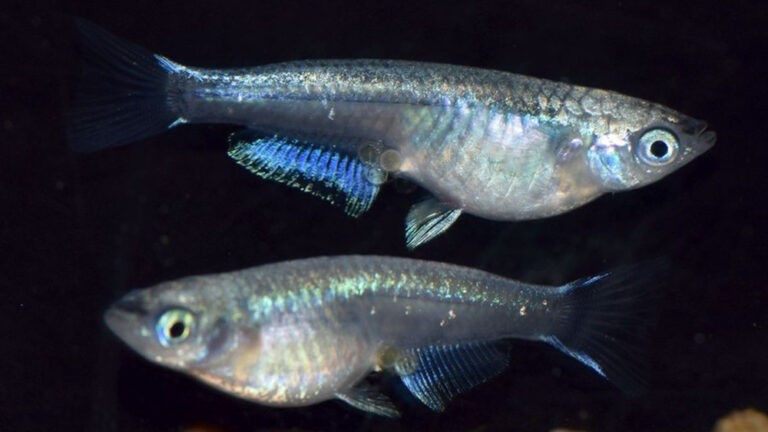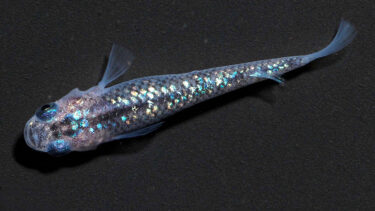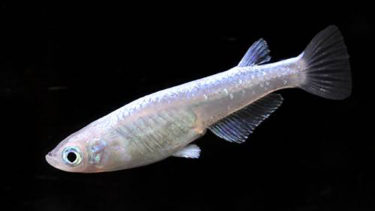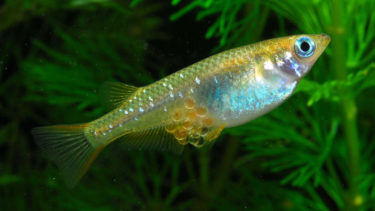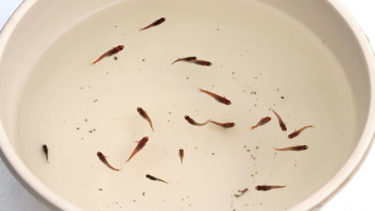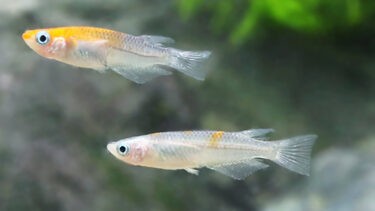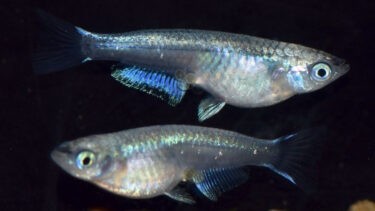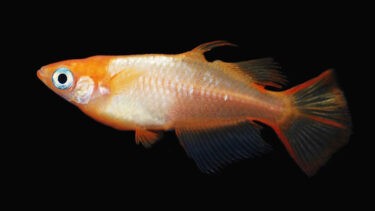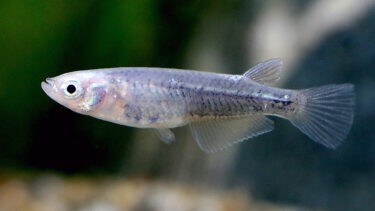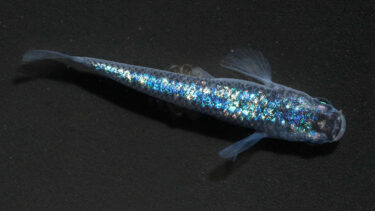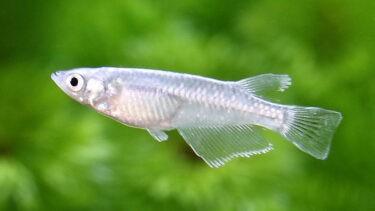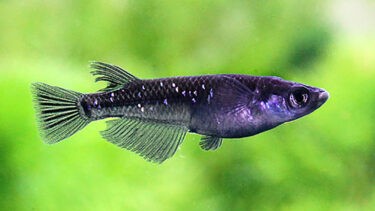Meteor killifish is a blue-colored killifish without a dorsal fin. The Meteor killifish is a variety that has been able to express uninterrupted external light (light on the back of the killifish) by eliminating the dorsal fin, which is a drawback of the external light that is interrupted by the dorsal fin of the normal trunked killifish. This is a popular new style of Mikiyuki killifish. In this article, I would like to explain in detail the characteristics and how to keep such a meteor medaka.
What is Meteor Medaka?

Meteor killifish is a blue-colored killifish without a dorsal fin. The absence of a dorsal fin allows for the expression of uninterrupted external light (the light on the back of the killifish), which is a drawback of the external light that is interrupted by the presence of a dorsal fin in normal killifish.The name "meteor" was given to this species because it looks like a single ray of light stretching in an uninterrupted straight line. It is a popular new style of Mikanuki killifish. In recent years, the media has been introducing this species more and more.
The green-light killifish is a killifish that appears green due to the distribution of yellow spores on its blue body color. The green-light killifish is a new variety of killifish with a new shade of green. The green-light killifish has the same external light characteristics as the Bikan killifish and other species. In this article, we will discuss the green-light killifish's [...].
Aurora killifish will be a blue killifish with translucent phosphorus. Translucent phosphorus refers to the intermediate between normal scales and transparent scales. Therefore, having both characteristics makes the body color appear somewhat transparent. Aurora killifish has the potential to change the future of killifish [...].
Origin of the meteor medaka

Meteor killifish was bred by Yoshinori Nakazato of Kanagawa Prefecture in 2013. It was born from a medaka without dorsal fins (Marco medaka) and a Mikanuki medaka.Breeding began with the assumption that the absence of a dorsal fin and the creation of an uninterrupted ray of light from the outside of the body would further enhance the attractiveness of the light from the outside of the body. Initially, the breeding was difficult because the dorsal-finless killifish (Marco killifish) used for the breeding had a yellow body color. Later, it became well known when it won the first prize in the new species category at the 5th Autumn Show.
The Yozakura killifish has yellow and black body colors with lame and translucent scales. The yellow and black body coloration makes it a distinctive variety that gives a very different impression depending on its coloration and intensity. Therefore, medaka that have "translucent phosphorus" lacking rainbow chromatophores and "lame" expressing rainbow chromatophores [...].
The Mikan-no-Medaka is a killifish with a bright blue glow on its back. There are various types of "Mikan-no-Medaka," including individuals whose body color is like that of blue killifish and white killifish. In this article, I would like to explain in detail the characteristics of these blue killifish and how to keep them. [...].
Points to keep in mind when mixing swimmers
About Mixed Swimming,Some people often think that killifish can only be kept in the same species, but the real appeal of killifish is in combining them. If you are not particular about this, you can mix any kind of killifish with any other kind of killifish.However, it is best to be careful with killifish of different body types (e.g., Dharma killifish and Hirena killifish). If killifish of different body types are mixed with killifish of normal body type, problems such as inability to eat food may occur. However, there are people who mix killifish of different body types with those of normal body types, so there is no need to be concerned.However, each type of killifish, which is considered a high-end killifish, has its own distinctive appearance and shine, so it is recommended to keep them in a way that allows the enjoyment of each individual (type) rather than keeping them in many different species.
Points about spawning
The point about spawning was explained in the above section that keeping a variety of species is the best part of keeping killifish, and having various species swimming together when spawning will naturally produce killifish with the characteristics of various species. However, that is not always a good thing. For example, mixing red and white killifish can produce pink killifish, but not necessarily red or white killifish, or in the worst case, killifish with a color that is hard to describe. If you want red killifish, you should keep only red killifish because the probability of producing red killifish is much higher,I recommend that you think about what kind of killifish you want when spawning and what color and shape you want your killifish to be born, so that you will have less regret and confusion when raising them and find your own way to enjoy them.If it is just a hobby, I think you will enjoy it more if you stick to the methods that you enjoy, regardless of whether people complain about them. The following page explains the method of spawning and points to note, so please read it as well.
Many people who keep killifish want them to spawn. However, not many people know about spawning and what they need to do to prepare for it. This time, we would like to explain the method of spawning and the points to be noted [...].
After the spawning is over, the fry hatch and are born. There are many things to take care of, such as the fry's food and precautions to be taken. In this article, I would like to explain how to raise the fry and what to do about it. The period of time until hatching is over when the spawning is finished and the eggs are [...]...
Points to keep in mind when keeping meteors killifish

Meteor killifish will be a trunked killifish without a dorsal fin. The lack of a dorsal fin makes this beautiful killifish look like an uninterrupted ray of extra-corporeal light (the light on the back of the trunked Japanese killifish).The characteristic of having no dorsal fins makes it a variety that synergistically raises each of its characteristics to the extent that it is said to be an evolution for the Mikanuki killifish. The many body shapes and body colors that exist with the Meteor killifish are said to have opened up the possibility for combinations that have not yet been created, as well as unexpected changes and evolution. It is such a beautiful and fascinating killifish. If you are interested in Meteor killifish, we recommend that you take a look at them at a specialty store.
Female killifish (mebina medaka) have black and orange body colors with translucent scales. The lame medaka has a characteristic orange color that is a darker shade of vermilion-red and is described by the name "persimmon color". The yellow and black body colors are marked by coloration and intensity [...].

